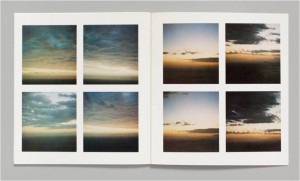
On Friday, September 28th, the Hirshhorn Museum and Sculpture Garden’s Head Librarian Anna Brooke gave a presentation at the NY Art Book Fair’s Contemporary Artists’ Books Conference on how artists’ books can be used in conjunction with a museum’s collection to provide greater insight into an artist’s body of work. Work studies student Lauren Zook, currently enrolled in the George Mason – Smithsonian collaborative masters program for decorative arts, aided in developing the presentation and has written a summary of it for our blog.
The Hirshhorn Museum and Sculpture Garden Library has acquired an unusual type of book—the artist’s book. Some of these books are mass publications and others are unique and vary in size and shape. A new initiative has been made by the Smithsonian Libraries to make these artists’ books more accessible to the public and protect them from damage. Most of the artists’ books at the Hirshhorn Library were produced by artists represented in the museum’s collection. These artists’ books can provide new insight to an artist’s work, show similar themes, and can even be shown in galleries as autonomous works of art.
Mungo Thomson’s Negative Space was created and published in conjunction with an art exhibition. The subject matter of the book provides an interesting play between the realms of art and science. Normally seen on different sides of the spectrum, Thomson brings art and science together through an artist’s book. The images in this book are inverted NASA photographs of stars taken by the Hubble telescope. Additionally, the cover page is designed to resemble the National Geographic Magazine. His images and the process of inverting photographs transforms a scientific subject into a contemporary work of art.

Artists’ books can also show an artist’s versatility. The Hirshhorn’s Philosophy Rug #3, 2007 is a work with many statements by Mungo Thomson, including: “When I am right no one remembers, when I am wrong no one forgets!” and “Compassion for All.” The theme and materials are completely different. His artist’s book provides interesting new perspectives on Thomson’s interests and subject matter.


Sometimes an artist’s book can serve as an outlet to create works atypical of the artist’s style. Sol LeWitt was a pioneer in a movement to make artists’ books more affordable to publish. This book, Sunrise & Sunset at Praiano, was commercially produced in order to reach a wider audience. The sequence of photographs in grid format is taken near his house on the Amalfi coast. The natural subject of this book contrasts with this conceptual artist’s typical geometric drawings.
An unconventional artist’s book, Lineament-Ball by Ann Hamilton, is not found in a library but at the National Gallery of Art. This altered book was made by continuously cutting lines from the text and rolling them into a ball. The Hirshhorn Museum features two time-based pieces by Ann Hamilton, but none of her artist’s books. In addition to promoting artists’ books, the Hirshhorn library is seeking to acquire them. Ann Hamilton is known for her large scale performances and installations. When these installations are dissembled, Hamilton produces object editions that archive her installations. They become a permanent element of a temporary project. Lineament-Ball is one of those object editions from the performance Lineament in 1994. Ann Hamilton’s work shows that artists’ books do not need to be limited to being book, but can transcend into works of art.

Be First to Comment